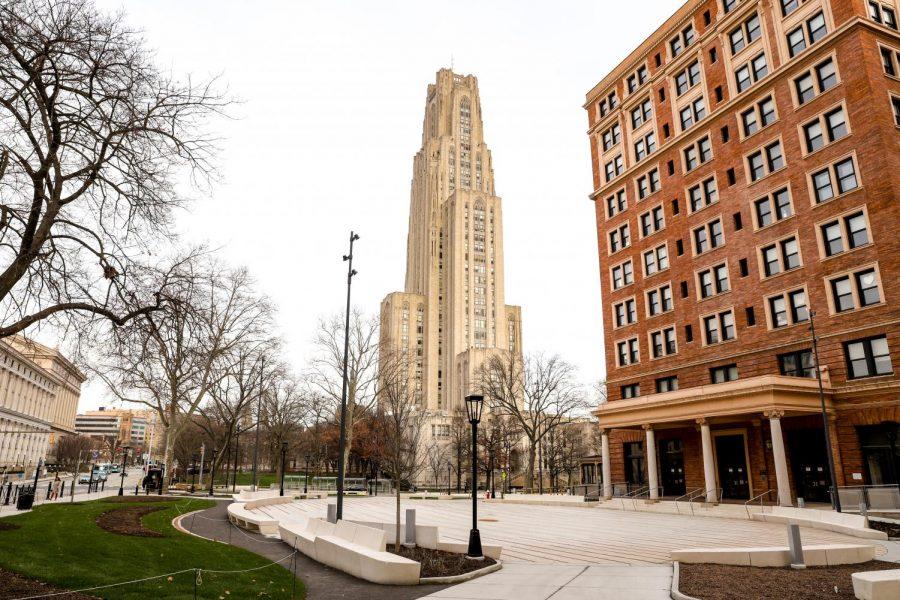Editorial | Pitt has repeatedly made the same mistakes with COVID-19
Kaycee Orwig | Senior Staff Photographer
According to the two latest updates from the COVID-19 Medical Response Office, Pitt recorded a combined 97 new student cases between March 30 and April 5, a significant increase in the virus’ prevalence on campus this semester.
April 7, 2021
Pitt shifted to the Guarded Risk posture on March 11, just nine days before the party-filled St. Patrick’s Day weekend. We warned of how unnecessarily risky this was and, lo and behold, the University is now scrambling to contain the spread of COVID-19.
According to the two latest updates from the COVID-19 Medical Response Office, Pitt recorded a combined 97 new student cases between March 30 and April 5, a significant increase in the virus’ prevalence on campus this semester. A previous update from March 29 reported a less worrying, but still substantial 29 student cases over four days, prompting the University to change its operational posture from Guarded to Elevated Risk. Alongside an indefinite shelter-in-place period, this shift in posture is meant to avoid even higher case counts and the need for the High Risk posture.
This outcome is neither surprising nor without precedent — it happened just last fall. The University shifted to Guarded Risk 12 days prior to Halloween — a decision we also found to be misguided — and COVID-19 cases climbed after a weekend of partying. The relaxation of virus mitigation efforts this spring right before an opportunity for large gatherings and its predictable effect proves that Pitt has seemingly learned nothing from the surge in infections last semester.
Pitt is also struggling with the same messaging issues it encountered in the fall, particularly around the “shelter-in-place” period. As we pointed out back in November, this unenforced mandate isn’t truly “sheltering” nor is it “in place.” Under these guidelines, students are still free to move about campus and use communal spaces, such as gyms or the library, allowing students to maintain some sense of normalcy.
It’s also unclear what purpose an indefinite shelter-in-place serves alongside the move to Elevated Risk. Under this posture, students can attend class and use shared study spaces, both relatively safe activities, and on-campus dining becomes takeout only — no different from a shelter-in-place period. It seems that the University is trying to convey urgency by doubling up here, but the redundant mitigation efforts just muddle the message. Clearly spelling out what Elevated Risk entails would be far more effective than throwing information at students for the sake of it.
Messaging has a real impact. In the same way that the shift to Guarded Risk may have inadvertently served as an “all-clear” signal for some, more clear and concise communication about returning to Elevated Risk likely could have encouraged safer practices. As it stands, many students are unsure what parts of their routine they should change, if any, in response to the recent tightening of restrictions.
That’s not to say that students need their hands held to make sure they stay safe — the burden of mitigation does not fall entirely on the University. As we’ve noted on multiple occasions, students are still accountable for their actions. Choosing to attend a crowded off-campus party or bar is unacceptable, but this behavior is still shaped by what Pitt says and does. An unforced error like moving to Guarded Risk before St. Patrick’s Day is an institutional failure that reverberates throughout campus and the wider community.
It’s been more than a year since the first COVID-19 case was recorded on campus — plenty of time for Pitt to analyze and improve its virus mitigation strategies. Yet here we are, editorializing the same errors over and over again. We’re tired, as is the rest of the student body. Hopefully Pitt can learn from its mistakes this time around.








